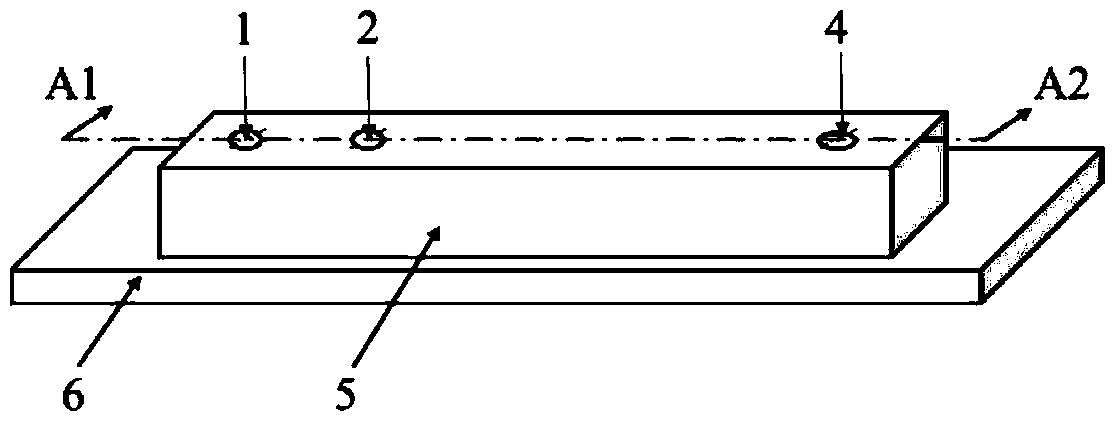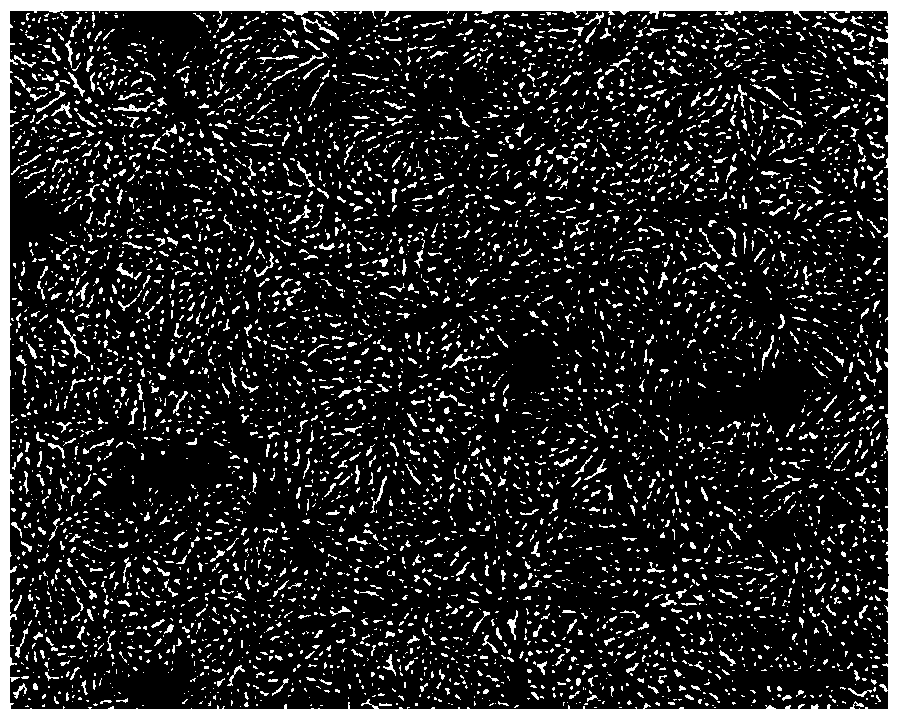A method for cryopreserving rat pancreatic islet cells using microchannels
A technology of islet cells and microchannels, which can be used in applications, preservation of human or animal bodies, animal husbandry, etc. to achieve the effects of reducing dosage, reducing osmotic damage, and reducing damage
- Summary
- Abstract
- Description
- Claims
- Application Information
AI Technical Summary
Problems solved by technology
Method used
Image
Examples
Embodiment 1
[0031] Embodiment 1: the preparation of microchannel device
[0032] Such as figure 1 and figure 2 As shown, the microchannel device is composed of a microchannel 5 and a slide glass 6, the microchannel 5 is glued on the slide glass 6, and the length, width and height of the microchannel device are 75mm, 25mm and 5mm respectively. The microchannel 5 includes four parts: a microchannel inlet 1 , a microchannel inlet 2 , a microchannel pipe 3 , and a microchannel outlet 4 . Microchannel pipeline 3 is the main part of microchannel 5, is positioned at the lower surface of microchannel 5, contacts with the upper surface of glass slide 6, and microchannel pipeline 3 communicates with microchannel inlet 1, microchannel inlet 2 and microchannel outlet 4 , the microchannel pipe 3 has a width of 280 μm and a depth of 220 μm.
[0033] The microchannel inlet 1 is located on the left side of the microchannel device, and communicates with the microchannel pipeline 3, and is used to intr...
Embodiment 2
[0036] Embodiment 2: preparation and performance of supramolecular gel
[0037] 1. According to the method described in the literature [10] (Ma Xiaodan. Synthesis of tyrosine derivatives and their gel properties [D]. Xi'an University of Science and Technology, 2012.), the gel factor G was synthesized. The gel factor G can self-assemble in the confined space of the microchannel to form a tight fibrous three-dimensional network structure. On the one hand, this three-dimensional network structure can limit the growth of ice crystals and reduce the mechanical damage caused by the formation of ice crystals to cells; On the other hand, the tight three-dimensional network structure of the supramolecular gel can play a slowing effect, greatly reducing the permeation rate of the cryoprotectant, and reducing the damage caused by the sudden change of the osmotic pressure difference between the inside and outside of the cell membrane.
[0038] 2. Add gel factor G to RPMI1640 medium, and d...
Embodiment 3
[0041] Embodiment 3: the cryopreservation process of rat islet cells
[0042] 1. Acquisition of rat islet cells: Collect rat islet cells from rats purchased by the Hubei Provincial Center for Disease Control and Prevention and put them into RPMI1640 medium containing fetal bovine serum (the volume ratio of fetal bovine serum to RPMI1640 medium is 1: 9), and then placed at 37°C, CO 2 Cultured in an incubator with a volume fraction of 5%.
[0043] 2. Preparation of rat islet cell suspension S2 containing gel factor G:
[0044] ①Take the above-mentioned cultured rat islet cells, digest them with 0.1% trypsin solution and blow them into a single cell suspension, and suspend the cells in RPMI1640 medium containing fetal bovine serum (fetal bovine serum and RPMI1640 medium The volume ratio is 1:9) for later use.
[0045]② Add gel factor G to RPMI1640 medium, and dissolve it completely by ultrasonication at 50°C for 6 minutes to prepare a solution containing gel factor G, and then...
PUM
 Login to View More
Login to View More Abstract
Description
Claims
Application Information
 Login to View More
Login to View More - R&D
- Intellectual Property
- Life Sciences
- Materials
- Tech Scout
- Unparalleled Data Quality
- Higher Quality Content
- 60% Fewer Hallucinations
Browse by: Latest US Patents, China's latest patents, Technical Efficacy Thesaurus, Application Domain, Technology Topic, Popular Technical Reports.
© 2025 PatSnap. All rights reserved.Legal|Privacy policy|Modern Slavery Act Transparency Statement|Sitemap|About US| Contact US: help@patsnap.com



